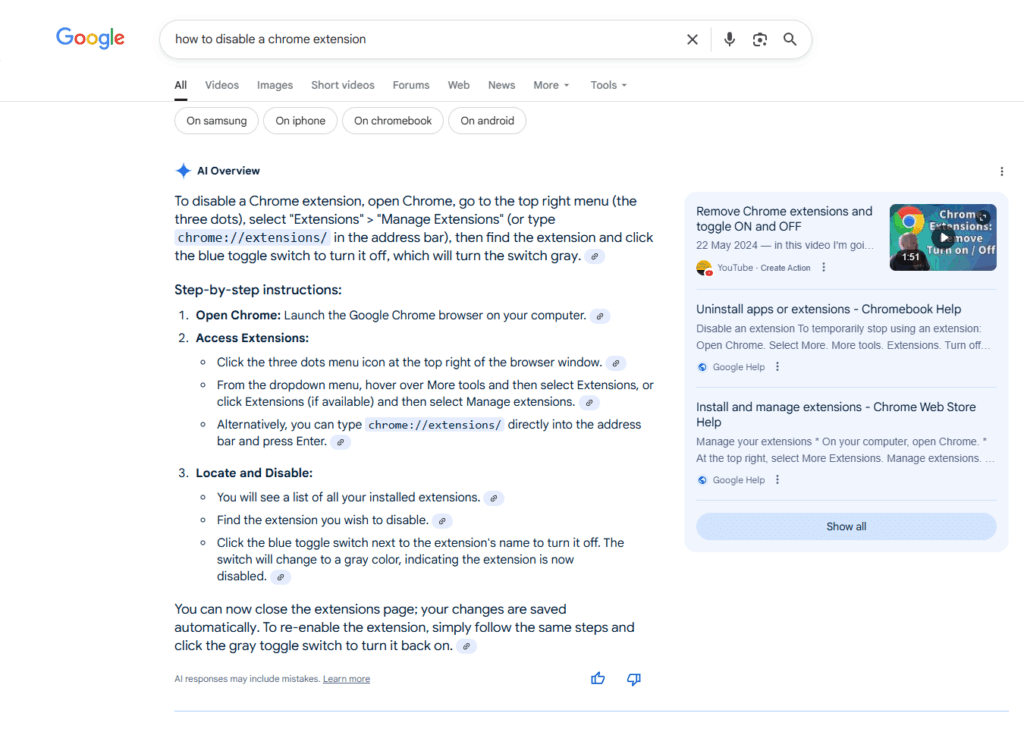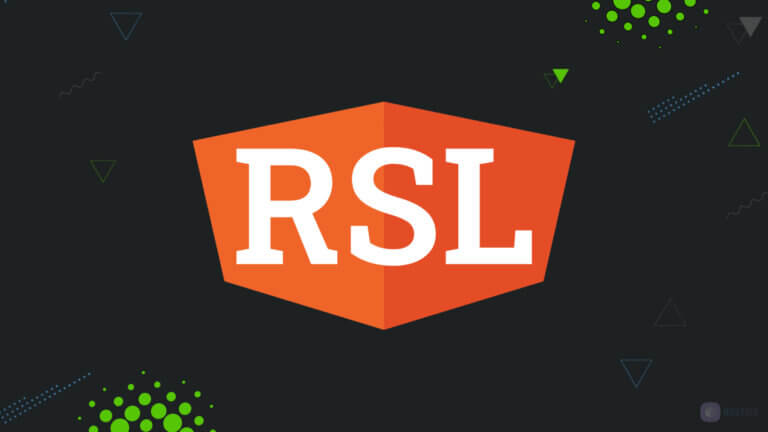When people want information, they’ve long “Googled” it. But that era is shifting. AI-search tools like ChatGPT, Perplexity, Microsoft Copilot, Google’s Search Generative Experience (SGE) and others are gaining ground. Unlike classic search engines, where you often click through many links, generative AI systems try to give direct answers in clear language. This has big implications for how businesses approach their online visibility.
In this article: we’ll define SEO and “GEO” (Generative Engine Optimization), see how search behavior is changing, examine what works (and what doesn’t), and show how businesses can use both to stay ahead.
What is SEO (Search Engine Optimization)?
SEO is the well-known practice of making a website easier to find via search engines like Google or Bing. Key pillars include:
- Technical SEO: site speed, mobile friendliness, secure connection (SSL), clean site structure for crawling and indexing.
- Content SEO: keyword research (what terms users search for), creating content that answers those queries, using headings, bullet lists, short paragraphs so it’s easy to scan.
- Authority & Linking: internal links, external links (backlinks) from trustworthy sites, showing your site is reputable and established.
These principles are still very much valid—and still work. But they’re evolving.
What is GEO (Generative Engine Optimization)?
GEO is an emerging concept (sometimes called AISearch-optimization, Answer-Engine Optimization, or simply “optimization for generative AI”) that focuses on ensuring that AI-powered search/answer systems (LLMs, chatbots, AI assistants) cite or include your content directly in their responses.

Rather than optimizing just for high placement in search engine result pages (SERPs), GEO aims for your content to be used, referenced, summarized or synthesized by these AI systems.
How Are Search Habits Changing?
The way people search for information is undergoing its biggest transformation since Google first launched. Instead of sifting through a list of links, more and more users are asking questions directly to AI assistants and trusting the single synthesized answer they get back. This shift has several major consequences:
- Direct Questioning Is the New Normal
- Instead of typing “best project management software” into Google and scanning through 20 results, users are now asking AI tools: “What’s the best project management tool for small teams under $50/month?”
- The answers are immediate, conversational, and tailored. People aren’t looking for pages to click anymore — they’re looking for instant clarity.
- AI Summaries Push Organic Results Down
- Google’s new AI Overviews often take up the top of the page, sometimes spanning half the screen. That means traditional organic listings (even if you’re ranking #1) are pushed further down.
- Microsoft Bing’s Copilot integration works the same way: it gives a direct answer, often citing only two or three sources. If you’re not one of those sources, your visibility shrinks.
- Click-Through Traffic Is Declining
- Studies (SEJ) already show that fewer users click past the AI-generated response. They get their answer from the summary and move on.
- For some industries (like travel, health, and software comparisons), this shift is even more dramatic, because those are exactly the kinds of “explainer” queries AI is best at answering.
- Voice & Mobile Search Accelerate the Trend
- With Siri, Alexa, and Google Assistant, people are already used to asking questions and hearing one definitive answer. Generative AI simply extends this expectation to text-based searches.
- On mobile, users don’t want to scroll through endless links — a single, conversational response fits better.
- Trust Moves to the AI Layer
- Users are increasingly outsourcing decision-making to AI. If ChatGPT or Perplexity cites a brand, it carries a weight of authority.
- This means that brand perception is shaped upstream — before the user even considers visiting your site.
- Search Becomes More Conversational and Contextual
- People are asking multi-step, nuanced queries that would have frustrated traditional search engines:
“Compare Shopify vs. WooCommerce for a small handmade jewelry business. Which one is better if I want low fees and no coding?” - AI handles this nuance in ways traditional search never could, meaning content must be structured in a way AI can parse, summarize, and contextualize.
- People are asking multi-step, nuanced queries that would have frustrated traditional search engines:
👉 The takeaway: Organic search isn’t dead, but it’s being reshaped. Businesses can no longer rely only on keyword rankings. To stay visible, your content must be optimized not just for people scanning links, but for AI systems choosing what goes into the single authoritative answer.
SEO vs GEO: Key Differences
Here are the main contrasts and overlaps:
Aspect | SEO | GEO |
|---|---|---|
Goal | Rank high in traditional search engine result pages, get clicks, visibility via “blue link” results. | Be cited or used in AI-generated answers; appear within summaries or responses given by generative interfaces. |
Focus | Keywords, site architecture, backlinks, performance, user intent. | Clarity, authority, structure, citation potential, relevance to AI-friendly queries. |
Content style | Can be longer guides, blog posts, pages optimized for many keywords. | More emphasis on answering questions directly, short answer blocks, FAQs, tables, statistics, quotes. |
Measurement | Search rankings, organic traffic, click through rate, bounce rate, conversions. | AI-citations, inclusion in AI answer-boxes, share of voice in generative responses, sometimes indirect traffic or authority signals. |
What Does GEO Require (What to Change)
To optimize for GEO, businesses should do things like:
- Write content in question/answer-style
Think in terms of “How do I …?”, “Why is …?”, “What is …?” rather than just stuffing keywords. Be conversational. - Use clear structure
Headings, subheadings, bullet lists, paragraphs that are easy to scan. Build in FAQ sections or sections clearly labelled to answer specific questions. - Authority, trust & citations
Use accurate facts, cite credible external sources, show your own expertise. AI tends to favor content from trusted domains. - Freshness and relevance
Keep content updated. Use current data. AI models and their retrieval systems often prefer newer, more accurate information. - Semantic richness
Use synonyms, related terms, context. Help AI understand what your content “means”, not just what keywords appear.
What’s True / What’s Overhyped
Here are some myths vs what our research suggests:
Myths / Overhyped Idea | What we found |
|---|---|
SEO is dead. | False. Traditional SEO remains essential. GEO builds on SEO; both are needed. |
If your content isn’t cited by AI, it’s worthless. | Not entirely. Even without direct AI citation, your content can drive traffic via classic search. But over time, being used by AI will contribute more to visibility. |
There are clear rules for GEO already. | No — it’s still new. Best practices are emerging, but things like “AI citations” are harder to predict and control compared to classic ranking signals. |
Any content can be picked by AI as a source. | Not quite. AI systems tend to favor content from authoritative sources, that are well-structured and factual. Low quality, outdated, or poorly referenced content is less likely to be used. |
Why GEO Matters — Especially Now
Search behavior is evolving faster than most businesses realize. Generative AI is no longer a novelty; it’s becoming a default gateway to information. That shift creates both risks and opportunities.
- If you’re not in the AI answer, you don’t exist
AI-driven search tools like ChatGPT, Perplexity, and Google’s AI Overviews are trained to respond in natural language rather than present ten blue links. If your brand isn’t one of the few cited or summarized, you risk being completely invisible. For example, if someone asks, “What’s the best VPS hosting provider for small businesses?” and the AI cites your competitor but not you, that competitor effectively “owns” the answer — even if you’re ranking decently in Google. - Authority now trumps click-throughs
Traditional SEO measured success by impressions and clicks. GEO shifts the emphasis: visibility inside the answer matters more than traffic to your site. Being cited makes your brand look authoritative, even if the user doesn’t click. This “implied endorsement” can boost credibility. Think about how Wikipedia is constantly cited by AI systems; even without users visiting the page, its brand as a trusted source grows stronger. - Early adopters are rewarded disproportionately
Just like in the early days of SEO, the companies that moved first reaped years of competitive advantage. GEO is at that same frontier. Many industries still don’t have well-structured, AI-friendly content. If you’re the first in your niche to adapt, you can dominate those AI-generated answers before your competitors even realize they’ve missed the boat. Example: Some law firms have already started structuring their FAQ pages around client questions like “What’s the difference between Chapter 7 and Chapter 13 bankruptcy?”. These concise, clear answers are more likely to be pulled into AI summaries. Competitors who stick with jargon-heavy, keyword-stuffed blogs risk being ignored. - AI assistants are sticky
When users start asking ChatGPT or Copilot for recommendations — e.g., “What’s the best CRM for startups?” — they don’t click ten links and compare. They trust the AI’s curated response. That makes top-of-answer placement the new battleground. Once an AI starts consistently citing a particular brand, that brand becomes the “default choice” in users’ minds. - The GEO halo effect
Even if clicks are fewer, citation in AI responses reinforces trust. If you’re mentioned in ChatGPT, Perplexity, and Google AI results, your brand gets a reputation boost. Think of it as the new PR: every time your content powers an AI’s answer, it’s like being quoted by a journalist in the New York Times. - Competitive urgency is growing
Reports from various sources note that many companies are still treating AI optimization as an afterthought. That means the playing field is wide open — but not for long. The gap will close quickly as more agencies and content teams pivot to GEO-focused strategies. Being a first mover now lets you capture market share that will be expensive — or impossible — to win back later.
👉 Bottom line: GEO isn’t just about futureproofing; it’s about seizing the current window of opportunity. Businesses that act now can lock in visibility, credibility, and authority in AI search before the competition catches up.
How to Combine SEO + GEO
You don’t have to choose one. The best strategy is a hybrid:
- Keep your SEO fundamentals solid: site performance, keyword research, backlinks, clean site architecture.
- Layer in GEO-friendly content: add FAQ sections, short answer summaries, tables of facts, data, quotes, schema markup.
- Monitor both kinds of metrics: not just keyword rankings and traffic, but whether your content is showing up (or being quoted) in AI summaries and answer boxes.
- Update content more often, and make sure high-authority sources are cited.
Conclusion
Search is not what it was. The “list of links” paradigm is shifting toward AI-generated answers. That doesn’t mean Google goes away — far from it. But to stay visible, trustworthy, and relevant, businesses must adapt. SEO is still crucial, but GEO is the new layer on top: being the answer, not just a result.
If you start building content now with both in mind — clear, factual, structured, authoritative — you’ll be ahead when AI becomes the first touchpoint for many queries.
This isn’t just advice; it’s already what we’re seeing in the data:
- Adoption is exploding: As of mid-2025, 78% of organizations now use AI in at least one business function, up from 55% just a year earlier. [McKinsey & Company]
- Generative AI is no longer fringe: 71% of those organizations regularly use generative AI in at least one business area. [McKinsey & Company]
- Market growth is steep: The global AI market was valued at about US$391 billion in 2025 and is projected to reach US$1.81 trillion by 2030, growing at a compound annual rate of nearly 36%. [Founders Forum Group]
- Search behaviour is changing: Google’s AI Overviews (their summary/AI summary boxes) already reach over 1.5 billion users per month. [The Verge]
- Traffic patterns are shifting: Zero‐click searches (queries where users get answers in the results page without clicking to external sites) are increasing, especially with news content. [New York Post]
What does this mean in practice? If your content is currently focused only on classic SEO — keyword stuffing, link building, ranking pages — you risk falling behind. Being in Google’s link results is still good, but being in AI-summaries, AI overviews, and cited answers may become the doorway through which many users find you first.
🫵 So start now: audit your content for clarity, structure, and authority. Build FAQs, answer real questions clearly. Use data, examples, trustworthy citations. If you do, when AI becomes the default search experience for many people, you won’t be scrambling to catch up — you’ll already be ahead.




Leave a Comment